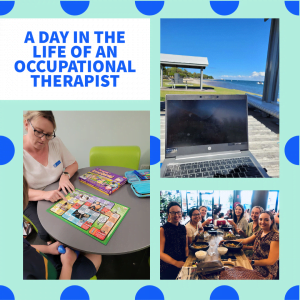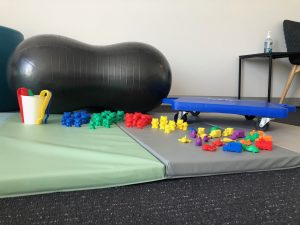Occupational Therapy for People with Sensory Processing Challenges
If you or your participant are dealing with sensory processing issues, Occupational Therapy can provide valuable support. Occupational Therapists can help people with sensory processing difficulties by providing individualised interventions that address their specific needs and goals. Sensory processing issues can impact an individual’s ability to engage in daily activities and interact with the environment. Occupational Therapy can help individuals with sensory processing difficulties by providing assessment, therapy, and recommendations to support a person to engage in the activities that are meaningful to them.
To further understand sensory processing and how Occupational Therapy for Sensory Processing can assist you or your participant, we outline what sensory processing is, how Occupational Therapy can assist, what sensory processing assessments, therapy and equipment are, and how NDIS Occupational Therapy for Sensory Processing can benefit participants.
What is Sensory Processing?
Sensory processing refers to the way our brain receives, interprets, and responds to sensory information from the environment. Most people are familiar with the five basic senses: sight, smell, taste, touch and hearing. However, there are three more senses that are essential for our well-being and functioning: vestibular, proprioceptive and interoception.
- The vestibular sense is related to our balance and movement in space. It helps us to coordinate our head and eye movements, and to adjust our posture and equilibrium.
- The proprioceptive sense is related to our body awareness and position. It helps us to sense how much force and pressure we need to use our muscles and joints, and to plan and execute our movements.
- The interoception sense is related to our internal sensations and emotions. It helps us to recognize and regulate our hunger, thirst, pain, temperature, heart rate, breathing and other bodily functions.
People with sensory processing difficulties may have trouble with everyday activities such as dressing, eating, playing, learning, or socialising. They may experience sensory overload, sensory seeking, or sensory avoidance behaviours. They may struggle to filter out irrelevant sensory information or become overwhelmed by certain sensory stimuli. This can lead to difficulties in processing sensory information and cause challenges in daily activities such as eating, dressing, socialising, or participating in leisure activities.
 What is Occupational Therapy and how can they assist with Sensory Processing?
What is Occupational Therapy and how can they assist with Sensory Processing?
Occupational Therapy focuses on improving an individual’s ability to engage in the daily activities they want and need to do. Occupational Therapists work with individuals with sensory processing difficulties to develop strategies and skills to cope with sensory information and improve their daily functioning.
Occupational Therapists can help people by using sensory strategies to improve their participation in daily activities. Sensory strategies are techniques that use one or more of the senses to provide the optimal level of stimulation for the individual.
For example, some people may benefit from calming sensory strategies, such as deep pressure, slow rocking, soft music or tactile strategies, to reduce stress and anxiety. Others may benefit from alerting sensory strategies, such as bright colours, fast movements, loud sounds or strong tastes, to increase their attention and motivation. Occupational Therapists can assess the sensory preferences and needs of each person, and design a personalised sensory plan that can be implemented at home, school, work or other settings.
Occupational Therapy is available to eligible participants under the NDIS scheme. Occupational Therapists can provide sensory processing assessments to identify specific sensory difficulties and develop individualised treatment plans. Therapy sessions can be conducted in a clinic, home, or community setting and may include a range of sensory-based interventions to help individuals improve their sensory processing skills.
What is a Sensory Processing Assessment?
An Occupational Therapy Sensory Processing Assessment is a process of evaluating how a person responds to different types of sensory input from their environment. The assessment can help identify the person’s sensory strengths and challenges, and how they affect their daily activities, such as self-care, learning, socialising, and playing. This may include information about sensory sensitivities, preferences, and coping strategies.
This information can then be used to establish what the person’s sensory preferences are and how they can be supported to achieve the regulated state they need to participate in day-to-day activities. It should be noted that it is possible to process sensory information differently to most other people and have no difficulties with activities of daily living. It is only when a person’s sensory preferences conflict with aspects of the environment or demands of a task (causing difficulty performing those activities the person needs to or wants to do) that there is a need to intervene.
An Occupational Therapist can use various tools and methods to conduct a Sensory Processing Assessment, such as observations, interviews, standardised tests, and questionnaires. Based on the results of the assessment, the Occupational Therapist can provide recommendations and strategies to support the person’s sensory needs and enhance their participation and well-being.
 Can sensory items be funded through a person’s NDIS plan?
Can sensory items be funded through a person’s NDIS plan?
Sensory equipment and sensory strategies are supports that can help people with sensory processing difficulties to regulate their sensory input and participate in daily activities. The NDIS may fund sensory equipment or sensory strategies for people with NDIS plans if they meet the reasonable and necessary criteria. This means that the supports must be related to the person’s disability, represent value for money, be likely to be effective and beneficial, and take into account informal supports and other funded supports.
Some examples of sensory equipment or sensory strategies that may be funded by the NDIS are noise-cancelling headphones. The NDIS have advised they do not typically fund some sensory equipment items, including weighted blankets, lycra bedsheets, trampolines and swings. The NDIS do not fund items they may place a person at risk of harm, are not evidence-based, and if they could be considered everyday household items.
Some people may choose to self-fund sensory items that are effective, beneficial, and safe for them. More information about the NDIS and funding for sensory equipment can be found by clicking here.
How can National 360 assist with Occupational Therapy for people with Sensory Processing challenges?
National 360 Occupational Therapists can assist NDIS participants with a range of services, including Sensory Assessments. Our team of local Occupational Therapists can visit participants in their homes, school, workplace, in the community, in our local clinics, or via Telehealth. Using a wide range of technology, tools, equipment, and systems, our National 360 Occupational Therapists can assist in improving the life of people with disabilities by allowing them to fully participate in activities at home, work, at school, or for play.
Contact National 360 Today!
If you would like to learn more about our Occupational Therapy services, please click here to read more about how we can assist you or you participant to achieve their goals.
For all enquiries or referrals, please use the details below to get in touch with our friendly team:
- Phone: 1300 340 440
- Email: info@national360.com.au
- Enquiry Form: Click here to complete.
- Referral Form: Click here to complete.

 What is Occupational Therapy and how can they assist with Sensory Processing?
What is Occupational Therapy and how can they assist with Sensory Processing? Can sensory items be funded through a person’s NDIS plan?
Can sensory items be funded through a person’s NDIS plan?

